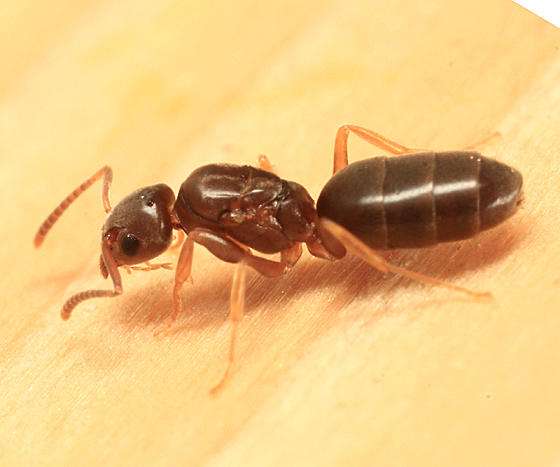
The ant species Ochetellus glaber is indigenous to Australia and is also referred to as the black house ant. The ant might be brown or black in color.
Where can one locate them?
They are frequently drawn to the kitchen, laundry room, and bathroom in the house and are typically attracted to sweet meals and drinks. Insects, honeydew, and nectar are their natural diet, and they forage and nest on trees.
Damage
Even though these ants are one of the few ant species that may nest inside, they are nevertheless regarded as domestic pests because they rarely inflict direct damage. They can be discovered building their nests in places like wall and roof cavities, inside potted plants, and between flat-packed furniture and rolled-up awnings. Additionally, electrical appliances like kettles, microwaves, PCs, and clock radios may become infected.
Description
O. glaber has tiny workers that are 2-3 mm in size (0.079 –0.118 in). The antenna is divided into 12 segments, each of whose scapes is half as long as the head. There are pronounced metanotal grooves and no upright hairs on the mesosoma’s dorsum. The slope is substantially concave because of the noticeable protrusion on the propodeum.
There is only one segment to the ant’s waist. The small waist’s petiole, which is straight and not flattened, is not. A ventral slit runs along the gaster. There is no obvious constriction between the third and fourth abdominal segments. The ant might be brown or black in color. Males are 1.6 millimeters shorter than the workers (0.063 in). The mandibles, legs, and antennae are yellow, while the body is brown in color with a brownish-black back. There are pronounced wrinkles on the head and thorax. O. glaber queens measure 5.2–5.5 millimeters in length, making them larger than males and workers (0.20–0.22 in).

Distribution and Habitat
O. glaber can be found across Oceania. It nests behind old, dry logs, stones or or else in hollow trees, or rotten wood, plant stems, in open spaces or savannah forest. It can be noticeable in gardens, where it is also frequently found. O. glaber has also been discovered in pastures, garden flower tubs, moist woodlands, mountainous regions, and dried palmetto fronds.
Interaction with Humans
In its interaction with people, O. glaber is seen as a pest. It bites, even though it doesn’t sting, and when crushed, it gives off a potent odor. As it tracks through ceilings, beams, and joists in human homes in search of food, it also scatters ant detritus onto surfaces below. Due to the ant’s strong capacity for reproduction and dispersal, it can also spread swiftly.
Some environments are more harmful than others for O. glaber. The ant is not allowed in the United States, particularly the state of California, out of concern that it may harm the ecosystems there.
Table





